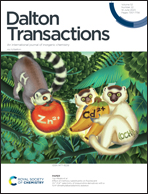Engineering of metal–organic frameworks (MOFs) for thermometry
Abstract
Metal–organic frameworks (MOFs ) are excellent candidates for use in chemistry, material sciences and engineering thanks to their interesting qualitative features and potential applications. Quite interestingly, the luminescence of MOFs can be engineered by regulation of the ligand design, metal ion selection and encapsulation of guest molecules within the MOF cavity. Temperature is a very crucial physical parameter and the market share of temperature sensors is rapidly expanding with technology and medicinal advancement. Among the wide variety of available temperature sensors, recently MOFs have emerged as potential temperature sensors with the capacity to precisely measure the temperature. Lanthanide-based thermometry has advantages because of its ratiometric response ability, high quantum yield and photostability, and therefore lanthanide-based MOFs were initially focused on to construct MOF thermometers. As science and technology have gradually changed, it has been observed that with the inclusion of dye, quantum dots, etc. within the MOF cavity, it is possible to develop MOF-based thermometry. This review consolidates the recent advances of MOF-based ratiometric thermometers and their mechanism of energy transfer for determining the temperature (thermal sensitivity and temperature uncertainty). In addition, some fundamental points are also discussed, such as concepts for guiding the design of MOF ratiometric thermometers, thermometric performance and tuning the properties of MOF thermometers.

- This article is part of the themed collection: 2023 Frontier and Perspective articles


 Please wait while we load your content...
Please wait while we load your content...